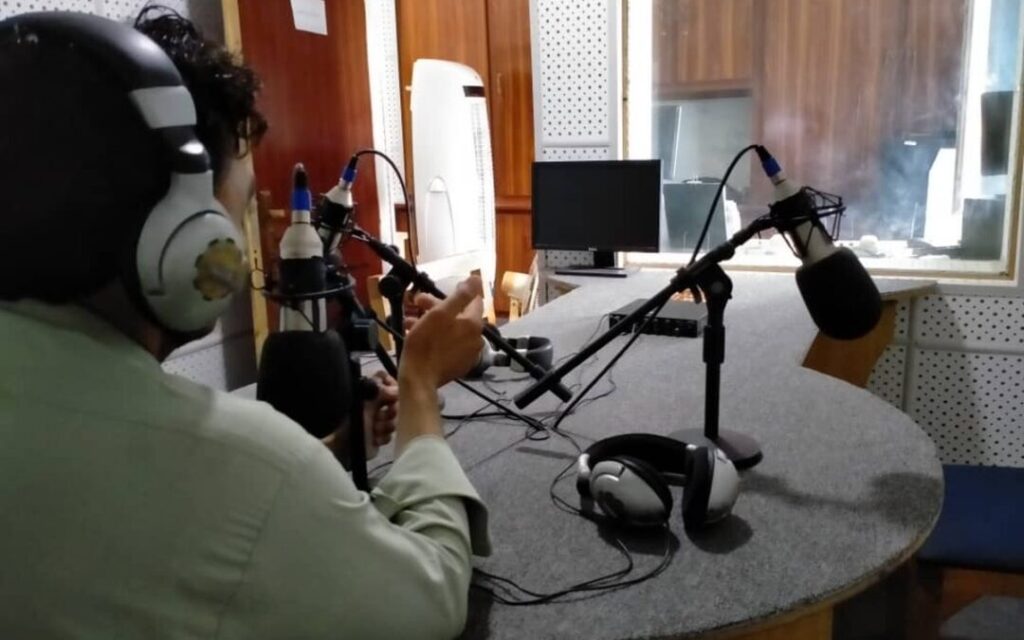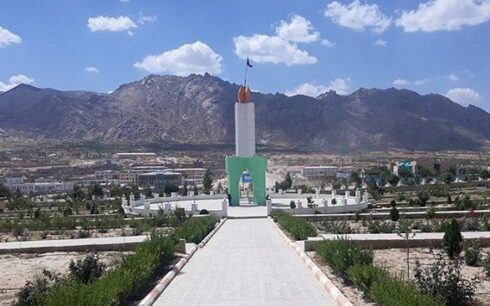KABUL, Afghanistan — Marking World Television Day, journalists decried the Taliban’s severe restrictions on the media, including a ban on broadcasting images of living beings in six of the country’s 34 provinces.
Media watchdog organizations have described these measures as oppressive, calling them an assault on freedom of expression.
Since returning to power in August 2021, the Taliban have imposed sweeping constraints on media outlets, forcing many to shut down and pressuring others into aligning their content with the regime’s ideology. These policies, media advocates say, have all but eradicated independent journalism in Afghanistan.

A ban expanding across provinces
The latest directive, issued by the Taliban governor in Kunar Province, prohibits the broadcast of footage showing living beings. Kunar joins five other provinces—Kandahar, Helmand, Takhar, Badghis, and Nangarhar—where similar bans are already in effect.
Journalists in Afghanistan have described the Taliban’s restrictions as stifling and dangerous. “Since the Taliban came to power, Afghanistan has become the most perilous country for journalists,” said a reporter from Takhar Province. “Media workers face severe challenges and are forced into self-censorship.”
In Nangarhar, another journalist expressed fears for the survival of journalism under the Taliban. “The ban on broadcasting footage and conducting interviews with Taliban officials has deeply worried us. These restrictions are designed to silence the voice of the people,” the journalist said.

Global significance of World Television Day
The United Nations established World Television Day in 1996 to recognize television’s influence on decision-making and its potential to spotlight social and economic issues. The theme for 2024, “Accessibility,” emphasizes making television content inclusive and harnessing its power to promote education, social change, and global connections.
Yet in Afghanistan, television—once a medium for free expression and cultural exchange—has become a battleground for control. Many journalists now operate in fear of retribution, with media outlets subject to stringent censorship and mounting Taliban pressure.
Media advocacy groups say the Taliban’s return has marked the end of independent journalism in Afghanistan. “Independent media ceased to exist after the Taliban took over,” said Mujib Khelwatgar, a media activist. “The Taliban have driven the final nail into the coffin of free media and freedom of expression.”
Since 2021, Taliban restrictions have included the censorship of news and political programs, the shuttering of television channels and radio stations, and a ban on female presenters showing their faces. Journalists have faced arrests, torture, and threats, according to the Afghanistan Journalists Support Organization.
In 2024, Reporters Without Borders ranked Afghanistan 178th out of 180 countries for press freedom. “The Taliban have conducted a brutal crackdown on the Afghan media, stifling all independent voices and plunging the country into silence,” said Célia Mercier, head of RSF’s South Asia Desk.
On this World Television Day, as the global community highlights the transformative power of visual media, Afghan journalists remain trapped in a climate of fear and repression. “The Taliban’s policies have left no space for free speech,” said Hamed Abidi, head of the Afghanistan Journalists Support Organization.
Observers warn that without international intervention and sustained advocacy, Afghanistan’s media landscape will continue to erode, leaving its citizens without a voice in an increasingly isolated country.





